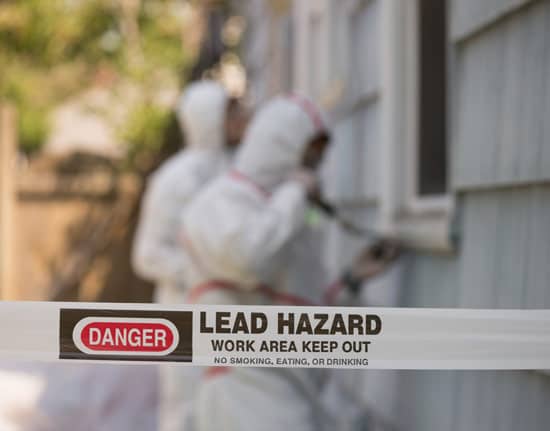Clear HPD Lead Offenses and Protect Your Home Investment
Browsing the intricacies of HPD lead violations is critical for home proprietors who prioritize both conformity and tenant security. With the substantial health and wellness threats associated with lead direct exposure, specifically in older buildings, attending to these offenses is not merely a regulative responsibility yet a strategic investment in the building's long-term value.
Comprehending HPD Lead Offenses
Lead offenses identified by the Department of Housing Preservation and Advancement (HPD) are important concerns that require immediate attention because of the major health and wellness dangers linked with lead direct exposure, specifically in youngsters. HPD lead violation clearance. These violations generally occur in buildings built before 1978, when lead-based paints were frequently made use of. Feature that fail to adhere to HPD laws might encounter substantial lawful and monetary consequences

Landlords are obligated to deal with these infractions quickly. Failure to do so can result in fines and further lawful activity from the HPD. In addition, keeping conformity not just makes sure occupant security however likewise safeguards residential property worth and financial investment. As a result, homeowner need to proactively handle lead dangers by conducting regular inspections and applying essential restorative steps to comply with HPD standards.
Health Threats of Lead Direct Exposure
Direct exposure to lead positions substantial health and wellness risks, particularly for prone populations such as youngsters and expecting females. Lead is a harmful steel that can trigger a series of negative health and wellness impacts, primarily affecting the nerves. In youngsters, even low degrees of lead direct exposure can result in developmental hold-ups, finding out difficulties, and decreased intelligence. The influence can be long-lasting, affecting academic performance and general top quality of life.
Expecting ladies revealed to lead may experience problems such as preterm birth, reduced birth weight, and developing concerns in their youngsters. The unborn child is specifically susceptible to lead's damaging impacts, as it can interfere with brain development.

Offered these significant health risks, it is essential for residential property proprietors to resolve lead hazards proactively. By guaranteeing compliance with lead safety policies, they not only safeguard the health and wellness of their renters however likewise protect the value of their residential property financial investments. Understanding and timely action are essential to reducing the dangers connected with lead exposure.
Steps to Resolve Violations
Addressing lead offenses is crucial for keeping both lessee safety and residential or commercial property value. The primary step in fixing lead violations is to carry out a thorough inspection of the residential or commercial property to identify locations where lead dangers may exist. Engage a qualified lead examiner or risk assessor to execute this examination, guaranteeing that all potential concerns are documented.
As soon as the assessment is total, it is crucial to create a remediation strategy tailored to the specific offenses identified. This strategy must follow neighborhood and federal regulations and detail the required steps to remove lead dangers effectively. Employing a licensed lead reduction contractor is suggested, as they possess the proficiency and tools to deal with lead securely.
After removal job is finished, a follow-up examination needs to be performed to verify that all lead hazards have been properly attended to. Recording the entire process, including evaluations, remediation efforts, and interaction with lessees, will certainly aid keep transparency and shield your property investment in the lengthy term.

Relevance of Timely Activity
Taking timely action to solve lead offenses is critical for protecting renter health and wellness and making sure conformity with lawful commitments. Lead direct exposure presents substantial wellness threats, specifically to at risk populaces such as youngsters and expectant ladies. By attending to these infractions quickly, building proprietors show a commitment to renter well-being and public safety.
Moreover, prompt resolution of lead offenses is crucial for fulfilling regulative demands. The New York City Division of Real Estate Preservation and Advancement (HPD) enforces strict standards relating to lead paint dangers, and failure to conform can lead to severe fines, consisting of fines and legal activity. Delays in dealing with these issues can exacerbate the scenario, bring about a lot more substantial remediation initiatives and enhanced costs.
In addition, settling infractions quickly fosters trust and transparency in between building owners and useful content lessees. Open interaction regarding lead precaution enhances occupant fulfillment and can mitigate prospective conflicts. Ultimately, taking instant activity not only secures public health however also strengthens the homeowner's reputation as an accountable proprietor. Prioritizing these activities guarantees that both lawful and moral requirements are fulfilled, securing the long-lasting stability of the home financial investment.
Keeping Building Worth
On a regular basis resolving lead offenses is vital for preserving residential property worth in today's competitive realty market. Residences with unsettled lead problems can helpful resources face substantial devaluation, preventing prospective buyers and lowering rental income possibility. Purchasers and financiers are progressively alert about wellness and safety and security requirements; for that reason, buildings lacking compliance with lead regulations might be considered as obligations instead of properties.

Moreover, properties that show a proactive strategy to lead infraction remediation signal a dedication to tenant safety and security and overall property upkeep. This click for info not only boosts marketability however additionally promotes tenant retention, minimizing turnover expenses. Feature that are certified with health codes commonly attract higher-quality occupants ready to pay a costs for a safe living setting.
In enhancement, maintaining correct documentation and a clear history of lead examinations and remediation can better reinforce property value. This openness builds count on with possible buyers and renters, showing that the residential or commercial property has actually been well looked after and is without unsafe conditions.
Ultimately, prioritizing lead compliance is not simply a regulative commitment; it is a critical financial investment in the long-term value and value of your property. Safeguarding your investment today guarantees a more lucrative tomorrow.
Conclusion
To conclude, dealing with HPD lead infractions is important for protecting both renter health and wellness and home investments. Timely removal not just makes sure compliance with policies but also minimizes the substantial health and wellness dangers related to lead exposure. Aggressive monitoring promotes count on and enhances building worth, eventually contributing to a sustainable financial investment strategy. Prioritizing lead safety mirrors an accountable technique to home monitoring, strengthening the significance of keeping a risk-free living environment for all owners.